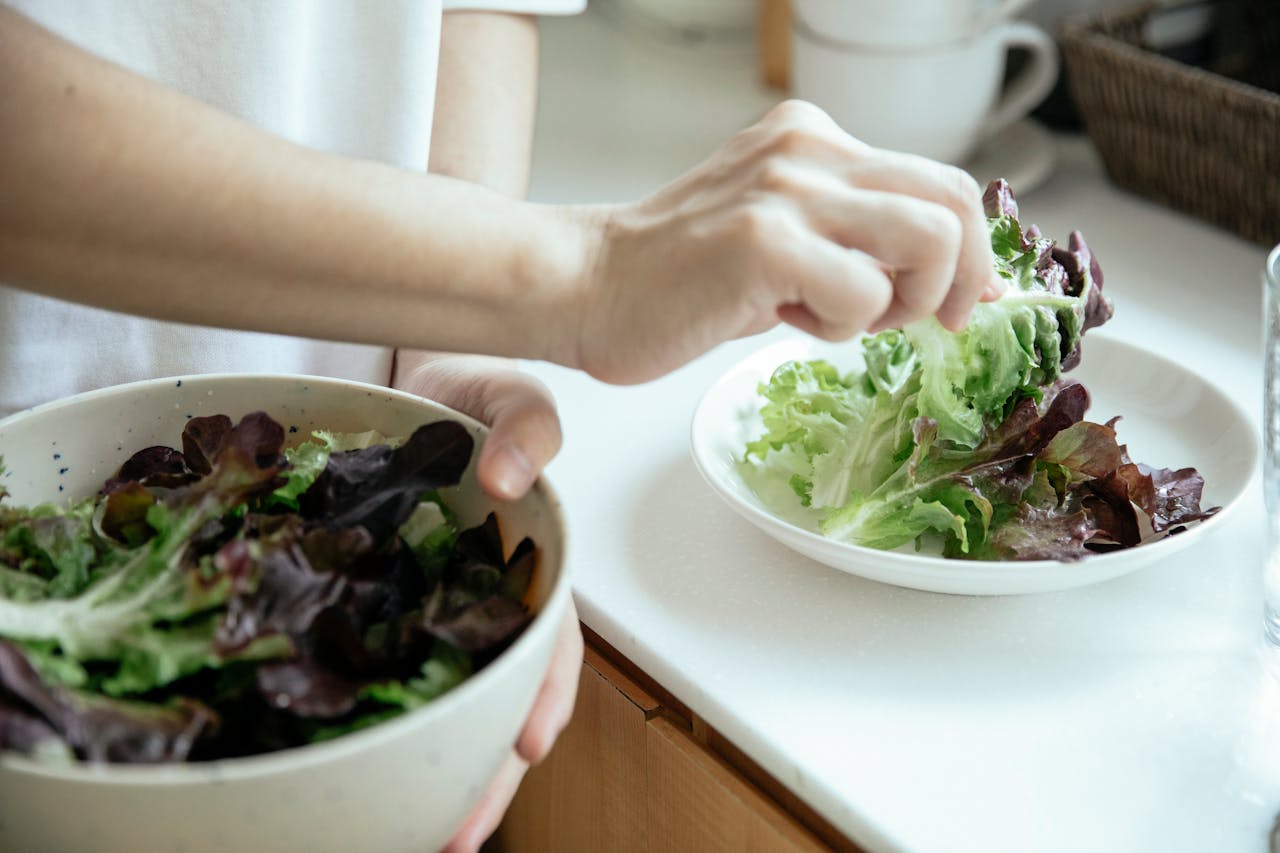How Many Calories to Eat During 16:8 Intermittent Fasting? How Many Calories Break a Fast?

CMO @ Fastic

With Fastic, millions of people have achieved their desired weight, overcome disease and regained their quality of life.
Adequate caloric intake during fasting is crucial for an effective fast. But, do you have to eat fewer calories during fasting or do you need to eat more? This text will explain the importance of calories in the body and their role in intermittent fasting.
16:8 Intermittent Fasting: How Does It Work and What Are Its Benefits?
The 16:8 intermittent fast consists of fasting for 16 hours and eating only during an 8-hour window. As with other intermittent fasting variations, like the 14:10 or the 20:4 fast, one can only drink calorie-free beverages during the fasting period. When the body lacks an immediate energy source from food, it resorts to stored fat for fuel to sustain vital physiological processes. This process of using stored fat for energy instead of glucose is known as ketosis.
The potential benefits of 16:8 intermittent fasting are:
reduced the risk of heart disease
improved insulin sensitivity
enhanced mental health
boost in metabolism
promote weight loss and cellular renewal
Among all intermittent fasting variations, the 16:8 fast is one of the most popular methods because it incorporates well into any routine. It gives sufficient time to eat the required daily calories without interfering with everyday activities. The way you schedule the eating hours is entirely up to you. Discover how the Fastic app can custom-make your fasting schedule according to your objectives, eating habits, and everyday schedule. Take the Fastic quiz to discover a fasting schedule unique to your lifestyle and goals.
How Many Calories Should You Consume When Not Fasting?
Science recommends adults consume between 1,600 and 3,000 calories per day.
Factors influencing individual caloric needs are:
age
gender
hormones
physical activity level
weight
lifestyle
medications
objectives (weight loss, overall health improvement, muscle gain, etc.)
How Many Calories to Eat During 16:8 Intermittent Fasting?
During fasting, you should still consume your respective calorie value. Caloric intake will differ from person to person and will vary even more depending on individual objectives.
The 16:8 fast doesn’t impose any calorie restrictions unless you want it to. However, other fasting and weight loss methods do impose calorie restrictions, for example the 5:2 method. This method requires you to reduce your calorie intake to 500-600 calories for 2 non-consecutive days and maintain your usual eating routine for 5 days.
Research recommends you have your eating window during the early hours of the day to have enough energy throughout the day, and to avoid food a few hours prior to bedtime. It’s important to adhere to the recommended calorie intake to ensure healthy and balanced nutrition. Prioritize high-calorie nutrient-dense foods, and eat various meals and snacks throughout the 8-hour eating window.
16:8 Intermittent Fasting Schedule with Calorie Count
To determine how many calories to eat during 16:8 intermittent fasting, we will use an average of the daily minimum and maximum calories required according to the Dietary Guidelines for Americans, which is 2,300 calories.
10:00 AM: Break your fast with a nutrient-dense meal containing 600-800 calories.
12:00 PM: Have a light snack with around 100-200 calories.
2:00 PM: Have a light snack of 100-200 calories.
3:00 PM: Eat a light meal with approximately 300-400 calories.
5:00 PM: Enjoy an abundant meal to prepare for the fasting period, around 600-800 calories.
6:00 PM: Begin fasting.
Using this example as a guide, you can adapt your own eating-window schedule to your daily calorie intake. Don’t be afraid to try variations in calorie, meal, and snack quantity, eventually you’ll find a combination that works best for you.

What Foods Should You Consume While Fasting?
Foods to incorporate into your diet during fasting are:
meat
fatty fish
eggs
full-fat yogurt
whole grains
nuts
Maintain an accurate calorie count using the Fastic app. The Fastic app’s AI-powered food scanner enables you to monitor each meal’s calorie, carbohydrate, fat, and protein content.
How Many Calories Break a Fast?
Consuming anything that stimulates an insulin response or any digestive process is considered breaking a fast. Consuming a small number of calories will most likely break your fast, therefore it is best to not eat anything during the fasting period. It can’t be said for certain that a fixed number of calories will break a fast, for every body is unique and will respond differently.
What Foods and Drinks Break a Fast?
Foods that break a fast are:
calorie-containing beverages (juice, milk, soda)
sugar and sweeteners (honey, maple syrup, and some artificial sweeteners and additives)
creamers and medications with calories (gummy vitamins, protein powders)
foods containing (protein, carbohydrates, and fat)
Zero-Calorie Options During Fasting
Don’t be discouraged, it might seem that everything edible and drinkable by humankind breaks a fast, but the good news is there are some fasting-friendly beverages you can have during the fasting period.
Acceptable drinks and additives that don’t break a fast and are low in calories are:
water (tip: enhance your water with low-calorie fruit slices like cucumber or lemon)
plain black coffee
pure herbal teas
apple cider vinegar
zero-calorie electrolyte beverages
Surprisingly, some artificial sweeteners may not break your fast, including:
Even though these low-calorie drinks and additives are low in calories, individual responses may vary and what may not trigger an insulin response in someone might do so in someone else.
Dietary Recommendations During Fasting
Follow these steps to experience a fruitful fast and attain optimal health benefits.
Emphasize lean proteins, healthy fats, and complex carbohydrates. These allow the body to promote satiety and provide sustained energy levels to perform your daily activities, including exercising while fasting.
Incorporate whole foods rich in vitamins, minerals, and antioxidants. Moreover, stay away from processed foods and excessive sugars.
Maintain elevated hydration levels by drinking plenty of water throughout the day, and don’t be afraid to enjoy zero-calorie beverages during fasting for added variety.
Meal timing and nutrient intake around workouts are paramount for maximizing performance and recovery. Consume nutrients and replenish electrolytes before and after exercising.
Tips for Staying Within Calorie Limits During Fasting
Drink water before meals to help avoid overeating.
Be your own chef to guarantee a fasting-friendly diet.
Opt for smaller eating utensils to control portion sizes.
Eat slowly in order to be more aware of fullness cues.
Prioritize nutrient-dense meals and snacks to ensure adequate nutrient intake.
Schedule meals and snacks in advance to avoid impulsive eating. Use the Fastic app for timely reminders of your meals and snack times, ensuring you stay disciplined and within your calorie limits.
Giving more importance to nutrient quantity over quality is a common mistake, and doing so can lead to nutrient deficiencies and health issues. Calorie quality is just as important as calorie quantity. Prioritize eating your recommended calorie intake through healthy foods.
Stay away from foods high in empty calories, such as sugary snacks and processed foods, for they lack essential vitamins, minerals, and fiber.
Adhering to the recommended calorie intake during fasting and focusing on a nutrient-dense diet will ensure an effective and healthy fast. To effectively maximize your fasting regimen and results take advantage of the Fastic app to help you stay within calorie limits.
Disclaimer: It is advised to speak with a health professional before beginning intermittent fasting or a diet program. There may be side effects for people with certain medical conditions.
With Fastic, millions of people have achieved their desired weight, overcome disease and regained their quality of life.
Take the Quiz